Swimming for his life, a man does not see much of the country through which the river winds.
– W. E. Gladstone’s diary, 1868
There is a myth that describes our problem with futurity: A beloved Eurydice, dancing upon the grass, is bit by a viper and soon thereafter dies. Her grieving husband, Orpheus, is only calmed by nymphs who promise her retrieval – but on one condition: that he walk in front of his missing wife, pulling her from the Under World to the Upper World, and that he never look behind him.
During this voyage, Orpheus begins to doubt his wife’s presence; he’s sure he’s been deceived. He turns to look, and she is lost.
The 56th Venice Biennale, All the World’s Futures, bears a similar result when we doubt its very premise. But it’s one we have to question. Because looking forward, in this exhibition, is the same as looking back: we’re met with something missing, a space we cannot gap.
I’d like to think that artistic director Okwui Enwezor – a long-established curator asserting identity, difference, and remoteness in the field of contemporary art – intended this sad rejoinder. However, this exhibition’s knowing portent doesn’t bear the restless and self-admitting frame it should. Rather, its privileged grounds and starlit status present these wares as headless and sincere.
Enwezor roots his earnestness in Paul Klee’s Angelus Novus, a historic 1920 sketch that symbolizes a world newly bereft of clear potential. The “angel of history” holds its wings up, eyes wide, steeling itself against the fuselage of a very recent past. Paralyzed, delayed, jammed by consequence, he cannot fly to safety. Enwezor wields Klee’s conflicted subject as one met by an eclipse: he sees a darkly-lit idol, a figure comprehending and fixed by knowledge, by fate. It’s a symbol of boding, and not potential.
Here we are: standing, puzzled, looking with scrutiny at the inscrutable; a plateau, a vast expanse of space. What do we see? A void of nothingness? A horizon of possibilities? What to do? Leap into the void or into the fray? Whichever direction one chooses, it’s in the unremitting potential and power of art that we must summon new approaches to representation in order to renew and challenge our vision of reality, to unmake old images and infuse them with new potency.
– Okwui Enwezor, “The State of Things,” 56th Venice Biennale, 2015
Enwezor proposes a future like a heavy-handed prognosis, his absent didactics bearing sanction.
We begin in the Arsenale with a vast floor that’s pocked by knives (Adel Abdessemed) and walls that spell our doom (a slate of “death neons” by Bruce Nauman, who famously began his career with a simple question, “what to do?”; Enwezor seems to launch his exhibition with a rueful reply). A bad series of paint-dripped chainsaws (Monica Bonvicini) gives way, thereafter, to a hall of sketched warfare designs (Abu Bakarr Mansaray) that read, in this context, too plainly. This is capped by a load-bearing canon (Arte Povera artist Pino Pascali, whose own canonization is inflected by his abrupt motorcycle death, at the age of 32). One begins to wonder if the joke – like a target – is positioned just above our erring heads.
Without curatorial inventiveness and intervention, walking the Arsenale (about 110 acres, or 15% of Venice, I kid you not) is like following a long sentence to its weary end. Enwezor offers us no relief. Katharina Grosse presents a show-stopping, graffiti-scrawled installation, for instance (which arrives at the one-third mark of the Arsenale, and envelops an entire gallery), initially suggesting a joyful study: something broad, colorful, immediate, and full. What follows, however, is the drop of our weighted penny. Grosse is merely animated, here, her hard work void of greater comment. This is what an overly-determined curatorial thesis can do to art – make statues of still-wet clay.
The exhibition format as a forum of public discovery of art’s potential in the face of difficulty and the inscrutable has limited leeway of margin for withdrawal. An exhibition is something that happens in the world and carries with it the noise.
– Okwui Enwezor, “The State of Things,” 56th Venice Biennale, 2015
Drawing is central to this exhibition. The curator promotes process in forms that are, in appearance, incomplete or inconclusive. However it’s Ji Dachun’s paintings that most coherently illustrate the exhibition’s theme. The canvases complicate media, form, and content, their maps darkened to near-black, or fully bleached. Just barely etched-in are the maps’ sites and citations, their credit-lines awaiting assignation.
Process-work is counter-weighted by the “archive,” here, with frequent vitrines and stage-like sets. We should remember that Enwezor is a long-celebrated “outsider” curator who achieved his status during the reign of cultural theory (when “the archive” represented so many un-opened files and unqueried texts). He still pulls from this era’s language. He writes:
For an exhibition such as la Biennale di Venezia, there are times (especially in the decades-long process of radical unmaking and destruction, of uncertainty and discord, of destruction and displacement that the world has witnessed over this period) when it seems impossible to strike a stance of disengagement from the state of things by placing faith in the irreducible, transcendental, and universal values of art.
Nevermind this muddled thesis, I worry Enwezor’s aim, here, is no better than muddled thought. What does it mean to ask after all the world’s futures? Why, with a body so weighted down by issues of labor, should Enwezor elect the future as our guiding light? What about this burrowed mass depicting crisis and stasis is suggestive of a clear way out? Did he mean to be, all this time, ironic?
The Giardini pavilion re-asserts Enwezor’s earnest dig. Oscar Murillo’s black tarping challenges our entry; Fabio Mauri’s repetition of the term the end (“fine”) underscores our hesitation. Christian Boltanski’s film l’homme qui tosse (1969) features a masked hermit vomiting red paint, pictured in 35mm film stock, reminding us that we’re dealing, at once, with abject language and romantic form. These gestures all strain to perform their question. Are we headless? Are we heedless? Are we finished, or unmoored?
Nothing dates a curator so much as the questions he feigns to ask. What are the world’s futures? The archive, the ruin, the abject, or our process? The questions are performative, the answers never sought.
Walter Benjamin fixated on Klee’s angel. He prodded it, he pushed at it, he projected onto it, until he beleaguered that form such that it entered the rank of symbol. Benjamin did what too few curators attempt, anymore, and what Enwezor hasn’t seemed to try: he tried to answer his own question. The angel of history was homesick, Benjamin realized. The angel was a haunted station.
I cannot tell what home is for Enwezor, nevermind what he terms the future. But I know his question is a landlocked place, one that doesn’t seek the sky. We are digging down, in this exhibition, not up, not outward, not onward. We, despite ourselves, turn to look behind us.







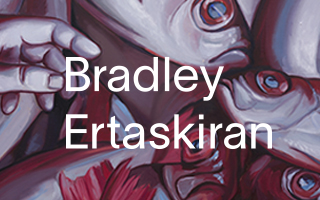

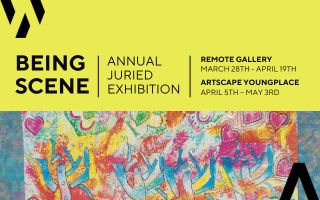

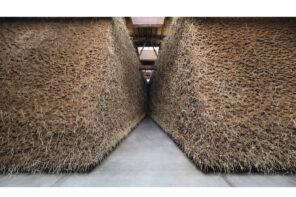
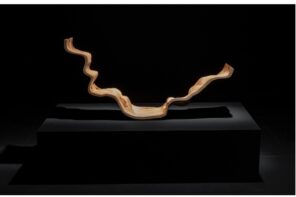
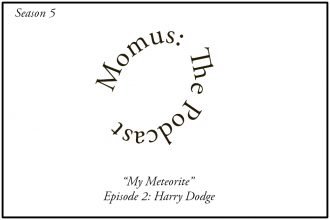
curious: what questions are, or should, (undated) curators be asking, right now, from your p.o.v.? (not just a question for MOMUS, but for commentors.)
(PS: isn’t an asked & answered curated show kinda like reading wikipedia, vs reading a poem?)